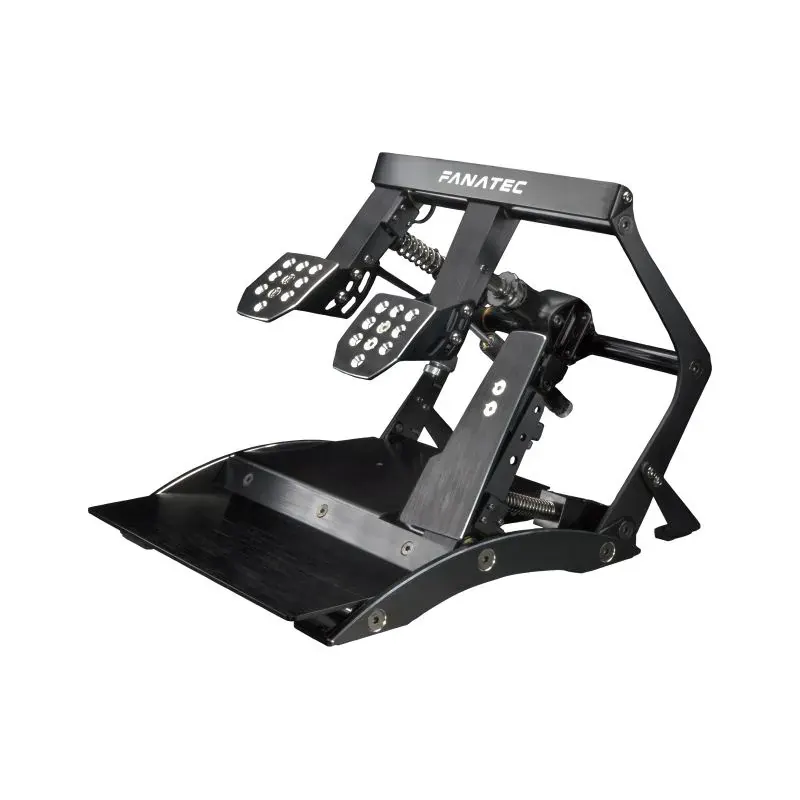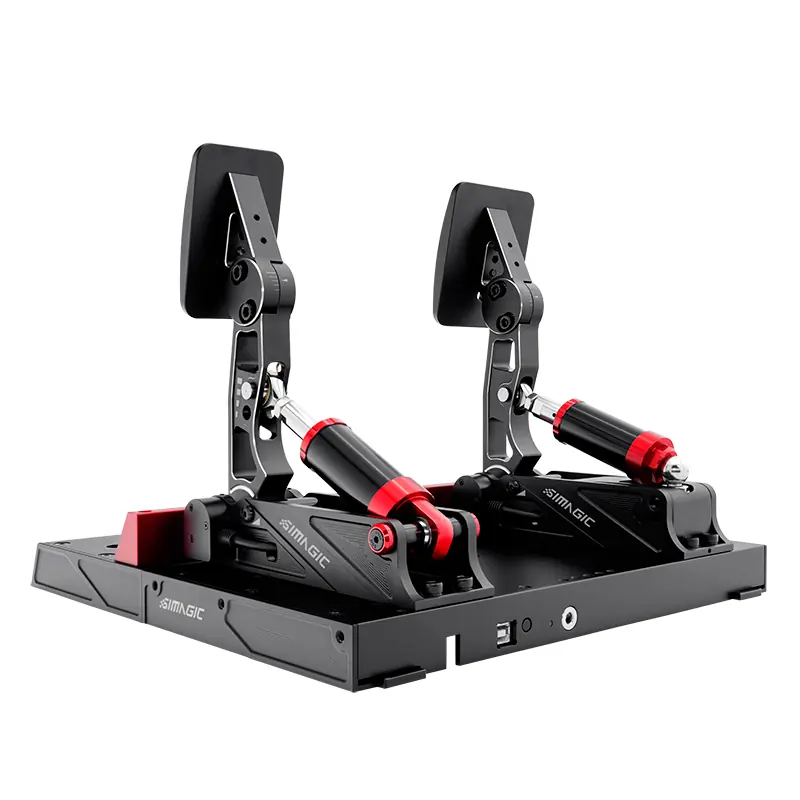
In this article we analyze and compare Moza CRP vs Fanatec V3 vs Simagic P1000 pedals.
In the world of simracing, having good pedals makes a huge difference in braking precision, acceleration and, in general, the feeling of control over the car. Among the most popular options on the market, these three models constantly stand out in forums and communities of professional drivers: Moza CRP, Fanatec ClubSport V3 and Simagic P1000.
Each of these pedals has its strengths and weaknesses, but which one is the best? As someone who has spent three years testing the V3s and has recently been testing the P1000s, I can give you some real insight based on experience. In this article, we’ll compare these pedals in terms of build quality, fit, software and track performance, as well as consider some interesting alternatives such as the VNM Lite.
Comparison – Moza CRP vs Fanatec V3 vs Simagic P1000
Before going into details, here is a comparison table with the main features of each model:
| Feature | Fanatec ClubSport V3 | Simagic P1000 | Moza CRP |
|---|---|---|---|
| Materials | Aluminum and steel | CNC Aluminum | Aluminum |
| Brake type | Load cell (90 kg) | Load cell (100 kg) | Load cell (200 kg) |
| Mechanical adjustments | Hardness and travel | Spacing, strength and travel, linearity | Hardness and travel and angle |
| Software | Fanatec Tuning Menu | SimPro Manager (very complete) | Moza Pit House |
| Resolution | 12 bits (4096) | 12 bits (4096) | 15 bits |
| Price approx. | 429$ | 479-669$ | 448-583$ |
With this in mind, let’s move on to the detailed analysis of each pedal.
CRP2 VS V3 VS P1000
Fanatec ClubSport V3: The simracing veteran
Fanatec ClubSport V3 pedals have been the benchmark in mid-high range pedals for years. They are robust, have a load cell of up to 90 kg, include vibration on the brake, throttle and clutch, and allow adjustments in brake hardness and pedal position.
Advantages of V3
✔️ Very competitive price-quality ratio.
✔️ Compatible with the Fanatec ecosystem.
✔️ Good level of adjustment in brake travel and hardness.
Disadvantages of V3
❌ It is not the easiest to mount in all cabins.
❌ The tuning software (Fanatec Tuning Menu) is more limited than the competition.
❌ Braking feel inferior to other high-end pedals.
My experience with the V3
After three years of use, I can say that the V3s perform their function very well, but when comparing them to more recent models, you can see that they have aged. The brake resistance is acceptable, but compared to the Simagic P1000, the feeling of control and customization is inferior. For someone in the mid-to-high end looking for solid pedals without spending too much, they are still a great option, but there are better alternatives.
Simagic P1000: Superior accuracy and adjustability
The Simagic P1000 is a newer option that has quickly gained recognition from the community. With a 100kg load cell, all CNC aluminum construction and extremely comprehensive tuning software, these pedals are positioned at the high end of simracing.
Advantages of the P1000
✔️ Improved accuracy and fit compared to V3.
✔️ Better build quality and finish.
✔️ More advanced software with response curve customization.
✔️ Easier to mount and adjust in any cockpit.
Disadvantages of the P1000
❌ Higher price. The price difference with the Fanatec Clubsport V3 is high, the V3 you have them for 429$ while the P1000 start at about 500$.
❌ Not as well known as Fanatec, so there is less support in the community.
My experience with the P1000
After a month of testing, my conclusion is clear: they are better than the Fanatec V3s in every aspect. From the more progressive and adjustable braking feel, to the ease with which you can modify the resistance and travel of each pedal, the P1000s offer a superior experience. In addition, their SimPro Manager software allows you to fine-tune every detail, something Fanatec has not been able to match.
CRP2 Wench: Are they worth it?
The Moza CRPs have been an interesting choice, but they lag a bit behind the P1000s but better than the V3s. Their design is attractive and they have a 200 kg load cell. Like the previous ones it has brake and throttle travel adjustment.
Advantages of CRP
✔️ Attractive design and robust construction.
✔️ Adjustment of hardness, stroke and angle.
✔️ Very powerful load cell.
✔️ Compatible with the Moza ecosystem.
Disadvantages of CRP
❌ High price. They start from 548$ but without clutch pedal and performance kit.
My conclusion on CRPs is that they are a solid option, but not the best in this price range.
Other competitors: Are alternatives worth considering?
If you are looking for more options, the VNM Lite is an interesting alternative. Although they do not include footrests as standard and aesthetically they are not as eye-catching, in terms of performance they may be even better than the P1000 in some respects.
This pedalboard has an interesting price that starts from 479$ and goes up to 619$ if we include the clutch pedal and the Heel Rest platform.
Also, if you want to enhance any pedalboard, haptic kits can add an extra layer of realism by incorporating brake and throttle vibration.
Conclusion: Which pedal is best for you?
✔️ If you are looking for the best regardless of price: Simagic P1000. They offer the best braking feel, customization and build quality.
✔️ If you want a balanced option in price and performance: Fanatec ClubSport V3. They are still an excellent choice, although they have been outperformed in some areas.
✔️ If you already have Moza hardware and want to maintain the ecosystem: Moza CRP2. They are solid and work quite well.
After testing the V3 and P1000, there is no doubt that Simagic has hit the big time. If you are looking for maximum precision and fit, they are the best choice. 🚀
The best option to use these pedals is in a good cockpit -> See the best cockpits for simracing






